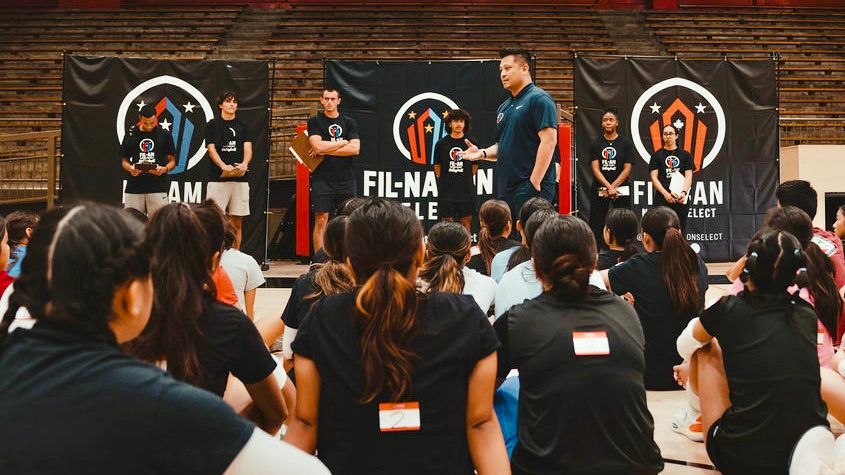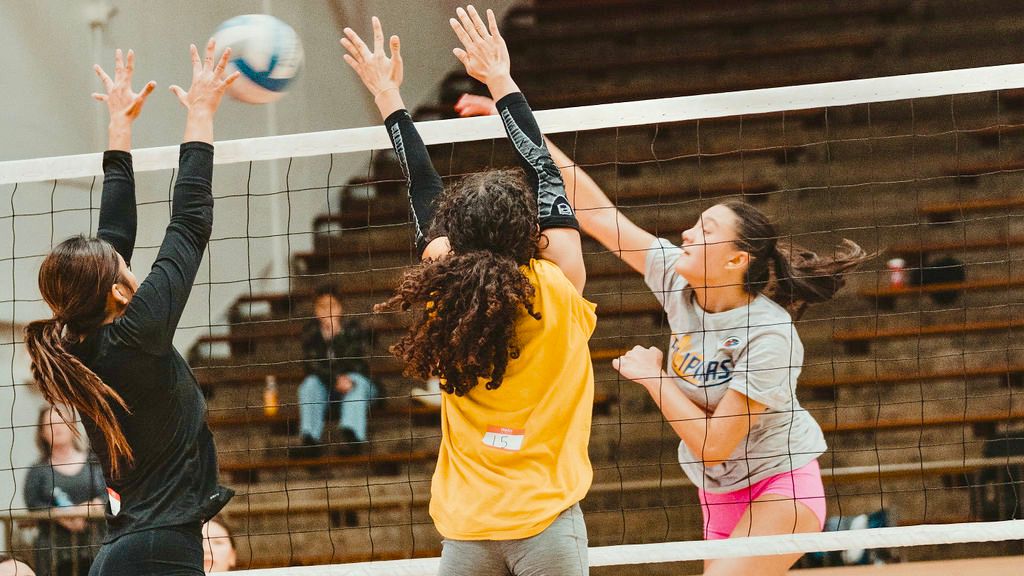HUNTINGTON BEACH, Calif. — When Lana Barrera stepped into the Golden West College gymnasium, she saw the other girls around her and felt at home.
"Throughout my life, I wanted to connect with my culture, and here I was with all of these great Filipino volleyball players," said Barrera, a 16-year-old student at Los Alamitos High School who is part German and Filipino.
In November, young men and women with Filipino ancestry gathered at the community college gym as part of an athletic identification showcase for an opportunity to one day play in the Philippines.
After the success of this past summer's Philippines Women's World Cup Team, which fielded many Filipino American players from across the U.S. — some in Southern California, sports organizers from the Philippines headed back to SoCal to identify and recruit other athletes.
This time, they plan to select, identify and train young men and women beach and indoor volleyball players for an opportunity to play in the country's colleges and professional volleyball leagues or earn a spot on the national squad.
"The goal is to identify good talented athletes with a Filipino background and give them an understanding of the opportunities to possibly play in a college in the Philippines or the PVL [Premiere Volleyball League] or the Philippines national Olympic program," said Chris Gopez, director and founder of Fil-Nation Select to Spectrum News.
"If we get one or two girls from here [on the national team], it's only going to benefit the country," Gopez said.
Fil-Nation Select is an organization that showcases athletes with Filipino roots and brings them to the Philippines in front of the country's sports directors and college and professional coaches.
The organization has already helped identify and recruit several youth athletes with Filipino blood to play in the Philippines' national soccer squads and basketball teams.
Now, the organization is working with the Philippine Volleyball Federation.

In December, Fil-Nation Select held the first combine to recruit high school-aged boys and girls volleyball players to potentially field a team to train, compete, and showcase to one day play in the Southeast Asian country.
Gopez said they have a slate of nationwide combines across the U.S. coming up. A Middle School West Coast Fil-Am identification camp in Santa Ana is slated for Feb. 10 and 11. There are ID camps in Oahu, Hawaii, Virginia Beach and Chicago later in the year.
Despite its vast popularity, the Philippines has never qualified for the Olympics in men's or women's volleyball.
The country has a die-hard women's volleyball fan base, with many following the players in colleges and then the PVL, the country's women's professional volleyball league.
Big games attract as many as 20,000 fans, said Sherwin Malonzo, the program head at Ateneo De Manila and PVL competition director. Malonzo has spoken with Gopez about identifying and recruiting Filipino foreign athletes.
"The Filipino volleyball fans are passionate," said Malonzo from the Philippines. "They really follow the game. It's not just volleyball or teams. They follow the [player's] lifestyle, what happens in their love life. It contributes to the popularity of the sport in the Philippines."
"In Tagalog, we call them 'Artista' fans," he added. "The players are like showbiz celebrities."
Malonzo said the youth volleyball landscape is competitive.
Talented players are scouted as early as 6th or 7th grade and funneled into the region's top high school and college teams. Unlike the U.S., where many players play in schools and clubs, the players in the Philippines play for their local school team and have regional competitions against one another throughout the year.
Over the years, a few Filipino American players from the U.S. have played professionally in the Philippines. But those were a few cases, Malonzo said.
Malonzo said bringing in what he calls "Fil-foreigners" players from the U.S. and other places abroad could benefit the country because it'll bring in more talent and help raise the quality of competition in colleges and professional leagues. And field a talented national squad that could qualify for future Olympic games.
Malonzo said three FilAm players are on the Philippines' men's national volleyball team.
But some wonder why would they play in the Philippines.
Gopez said it's an opportunity for many athletes with Filipino ancestry to connect with their roots and their family homeland, travel internationally and become worldly. "Fil-foreign" players would need to become dual Philippine citizens.
Also, although many young U.S. athletes aspire to play for Team USA, the chances are slim. For example, the 30 U.S. national volleyball team players are the top 1% of the 1% of players who play college and professionally.
"If they are not being considered or can't make Team USA, why not give the Philippines a chance?" Gopez said.
Chris Komer, a former professional volleyball player and head of Fil-Nation Select's player development, said the goal is to identify talent, build a team and eventually create a pipeline for the Philippines.
He plans to field various teams — boys and girls — from age groups 12 under to 18 under nationwide. Eventually, the U.S. teams will travel to compete in the Philippines.
"I think the plan is to collect talent nationwide and place them in front of the Philippine Olympic Committee," said Komer. "We want to improve the volleyball landscape in the country and improve their pro league."
For Barrera, the 5'7" Los Alamitos Filipino American volleyball player, she would consider playing volleyball for a college or professionally in the Philippines. She attended the combine last month and is awaiting more instructions on proceeding.
"I'm open to it," said Barrera, who plays club volleyball for United Volleyball Club. "I think it would be great. It's a way to connect with my culture, learn the language, dig into my roots and meet family in the Philippines. And also, do what I love to do most, play volleyball."



